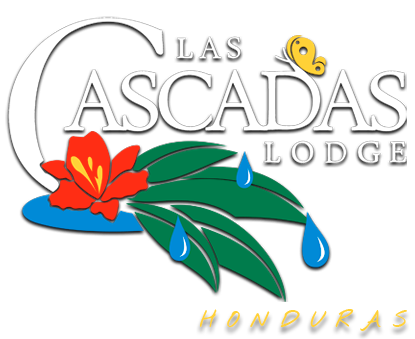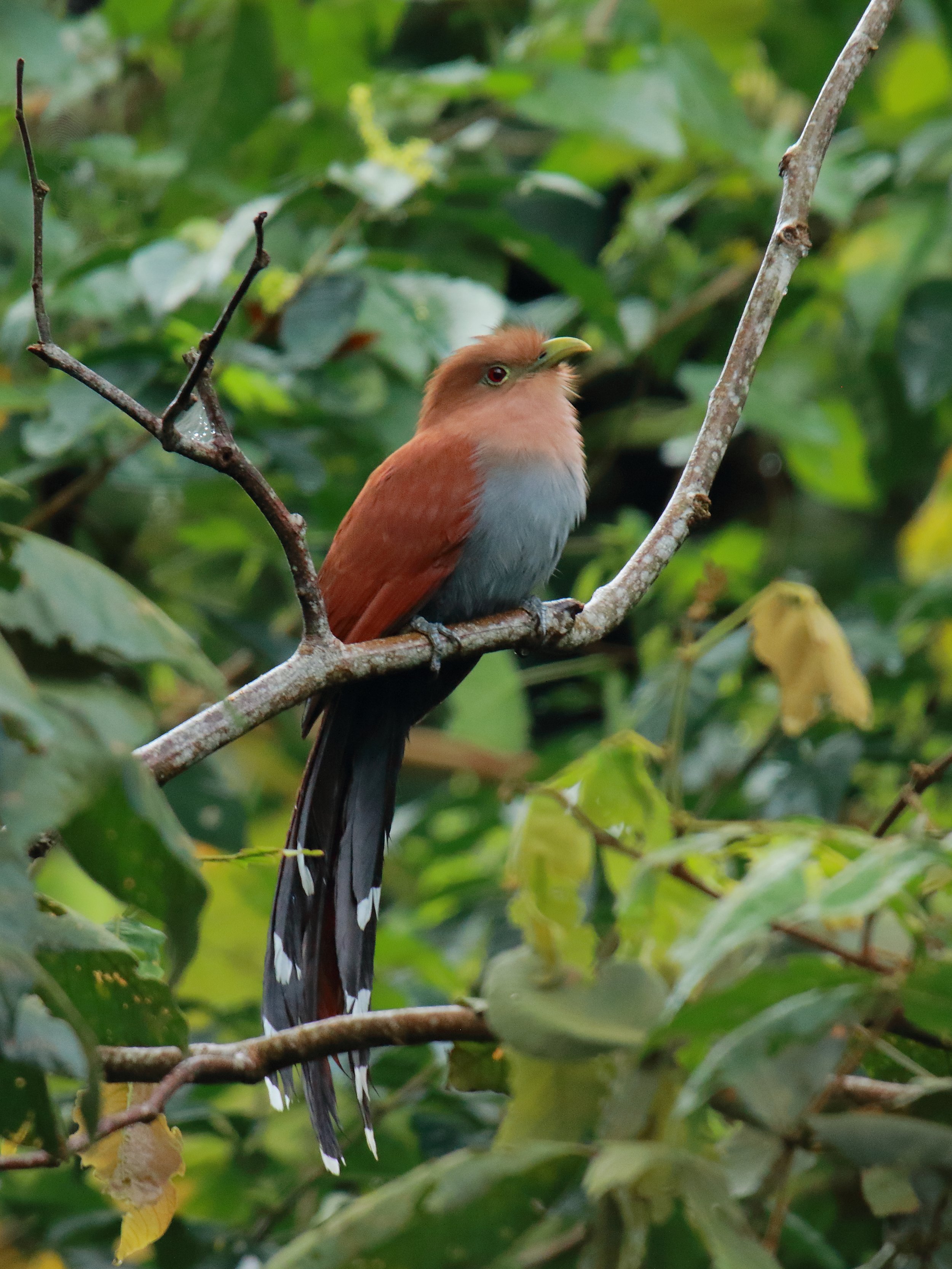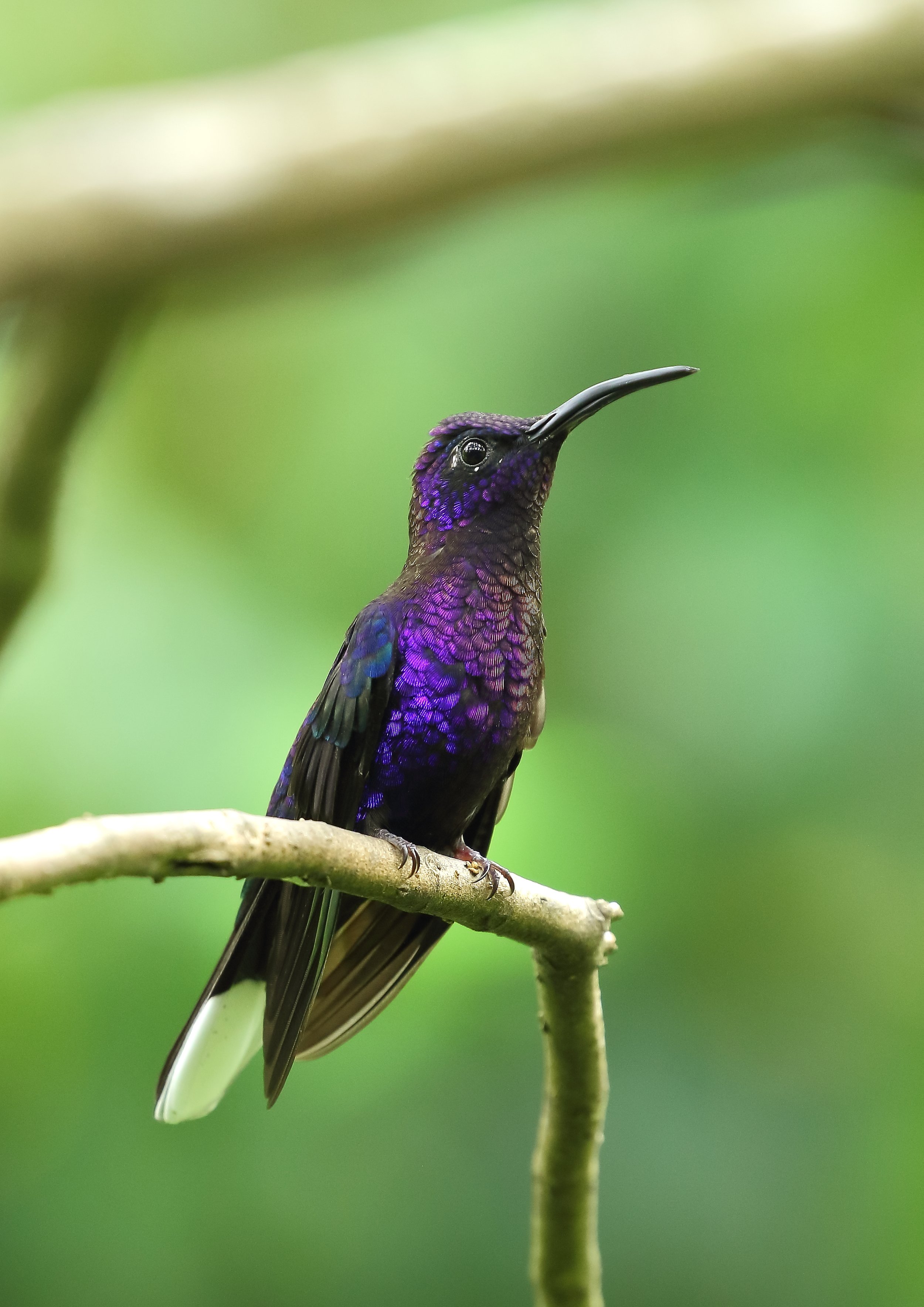10 Day Birding Package
Lovely Cotinga - James Adams
Las Cascadas Birding Package
9 NIGHTS/10 DAYS
This 10-day, 9-night guided birding adventure begins with 5 nights at Las Cascadas Lodge and ends with 4
nights at the well-known Panacam Lodge within Cerro Azul Meambar National Park.
From our base on Honduras’ north coast at Las Cascadas Lodge, we'll enjoy birding various sites among the tropical rain forests of Nombre de Dios and Pico Bonito National Parks, the wetlands and coastal mangroves of Cuero y Salado Wildlife Refuge, and on day 6, Tela's lush Lancetilla Botanical Gardens.
From Lancetilla, we move to the rain forests near Panacam Lodge, the vast, humid shores of Lake Yojoa and Los Naranjos archaeological site, the misty cloud forests of Santa Barbara National Park, and the tropical dry/pine forests near El Cajon Reservoir, a newly discovered location for Honduras endemic, the Honduran Emerald Hummingbird. The areas covered in this itinerary report a combined 570 of Honduras 780+ bird species.
Package Decription
Day 1: Arrive San Pedro Sula (SAP), transfer to Las Cascadas Lodge.
Most international flights get into San Pedro at mid-day or later, so our arrival to Las Cascadas Lodge will be late afternoon and leave time for relaxing and a late dinner in our waterfall-side dining area.
Meals: Dinner Las Cascadas
Lodging at Las Cascadas Lodge
Day 2: AM birding Las Cascadas trail. PM birding the Orchard Trail.
After breakfast this morning we’ll start out birding the “La Cascada Trail” which leaves directly from the
lodge. The route is somewhat steep, but we’ll take it slow. The forest here is high-canopy, primary rain forest, and is an ideal place for chasing mixed flocks of birds that move in search of food throughout the forest. The route here is mostly shaded and allows for observation of more interior forest species such as Tody Motmot, Keel Billed Motmot, Black Throated Trogon, Northern Schiffornis, Stub Tailed Spadebill, Chestnut-colored Woodpecker, Brown-hooded Parrot, Great Tinamou, Ruddy Quail Dove, Tawny-faced Quail and others, as well as species associated with mixed flocks such as White-shouldered Tanager, Green Shrike-vireo, Tawny-crowned Greenlet, Plain Ant-vireo, Russet Antshrike and many more. After lunch and some mid-day rest, we’ll head for the lodge’s Orchard Trail, which passes through open canopy forest and tropical forest edges that are mixed with cocoa and citrus crops. This mosaic habitat is ideal for observing birds that feed in open places such as: Keel Billed Toucan, Collared Aracari, Black- crowned Tityra, Scarlet-rumped Tanager, Golden-hooded Tanager, Olive-backed Euphonia, Green Honeycreeper, Red-legged Honeycreeper, Pale-billed Woodpecker, and many New World tanagers and finches.
Meals: Breakfast, Lunch, Dinner Las Cascadas
Lodging at Las Cascadas Lodge
Keel-billed MotMot & Squirrel Cuckoo - James Adams
Day 3: AM birding Cuero y Salado Wildlife Refuge. PM birding Corinto Pearl. Night Las Cascadas.
Cuero y Salado Wildlife Refuge is named for the Cuero and Salado Rivers which here meet the ocean, The Refuge comprises over 35,000 acres of rivers, lagoons, mangroves, and forests that are home to diverse wildlife and a variety of birds exceeding 350 species. We’ll meet our guide early for breakfast, and depart for the refuge by 6:30. Access into this wilderness is via a small, fruit company railroad, which takes us along a century old track through bird-rich ranchlands, marshlands and plantation areas, ultimately arriving at the mouth of the Salado River and the Refuge itself. Birding from the train is always fun and exciting, as the conductor is eager to stop and point out species of interest along the way. Depending on season, a variety of raptors, wading birds and edge- habitat species abound along the railway. Conditions of the railway are always changing, and there is a chance we’ll access the refuge more from the west, which is just as bird-rich and offers great birding as well. Once at the Refuge, we’ll explore the various aquatic and forest habitats from a small, motorized skiff. Our guides and boat handlers are superbly trained spotters and when needed, prefer to silence our boat’s motor and quietly paddle in for a better look. Agami Heron, Boat-billed Heron, Bare-throated Tiger Heron, Yellow-crowned Night Heron, Tri-colored Heron, Jabiru Stork, Pigmy Kingfisher, Gray-necked Wood Rail, Laughing Falcon, Bat Falcon, Lesser Yellow- headed Vulture, Gray-necked Wood Rail, and Sungrebe are but a few potential highlights of a visit to Cuero y Salado. Other wildlife commonly seen here include: Black Howler Monkeys, White-faced Monkeys, Lesser Anteater, Central American Coati, Raccoon, Green Iguana, American Crocodile, and Spectacled Caiman. En-route back to Las Cascadas, we’ll stop for lunch and an afternoon of birding at Corinto Pearl Eco Resort along the northern slope of Pico Bonito National Park. Corinto Pearl is a several hundred-acre property that borders the park along the Rio Corinto, containing vast areas of secondary rain forest and an incredible diversity of important fruit -bearing tree species, which are crisscrossed with easily accessible and walkable trails and roads. The entire area is attractive to many secondary forest and open-area species such as: Lovely Cotinga, Crimson-collared Tanager, Turquoise-browed Motmot, Lesson’s Motmot, Squirrel Cuckoo, Keel-billed Toucan, Collared Aracari, Black-headed Trogon, Blue-crowned Chlorophonia, Plain Chachalaca, Yellow-billed Cacique, White-collared Manakin, Red-capped Manakin, Long-billed Hermit, Stripe-throated Hermit and many, many more. We’ll finish out the day’s birding here and make our way back to Las Cascadas Lodge for dinner.
Meals: Breakfast Las Cascadas, Lunch Corinto Pearl, Dinner Las Cascadas
Lodging at Las Cascadas Lodge
Day 4: AM birding Rio Santiago. PM birding Pico Bonito.
Today will begin with an early breakfast and departure for Rio Santiago, about an hour to the west along Pico Bonito National Park. Rio Santiago is a 150-acre private preserve located along the northern foothills of the park. Its secluded, rain forest location and impressive numbers of hummingbird feeders have earned it the name of “hummingbird capital of Honduras”. Throughout most of the year, Santiago’s trails and main garden areas abound with bewildering numbers of some of Honduras’ most well-known hummingbird species. Rufous-tailed Hummingbird, Cinnamon Hummingbird, Brown Violet-ear, Band-tailed Barbthroat, Violet Sabrewing, Crowned Woodnymph, Stripe-throated Hermit, Long-billed Hermit, Stripe-tailed Hummingbird, White-bellied Emerald, and Scaly-breasted Hummingbird are among the 20+ species that frequent Santiago’s feeders. In addition, the spectacular Keel-billed Motmot, Rufous-tailed Jacamar and Sunbittern are frequently seen along with Red-capped and White-collared Manakins and much more along Santiago’s trail system. For lunch, we’ll head back east and stop at the Lodge at Pico Bonito, another prime birding site along Honduras’ north coast. We’ll enjoy a relaxed lunch in the Lodge’s Itzama restaurant overlooking the Lodge’s bird-rich gardens. Afterwards, our guide will lead us throughout the Lodge grounds and plantations. A climb to the top of the “Toucan Tower” observation platform, usually offers a bird’s eye view of the forest canopy that can include heart-stopping views of the coveted Lovely Cotinga. Throughout the afternoon we’ll bird areas of tropical, secondary and gallery forest and plantations areas along the Rio Coloradito. Along this route, diversity is the rule and examples of sightings include Lovely Cotinga, Masked and Black-crowned Tityras, Lesson’s and Turquoise-browed Motmots, Tody Motmot, Keel-billed Toucan, Collared Aracari, Ferruginous Pigmy Owl, Black-cowled Oriole, Black-headed, Violaceous, Collared and Slaty-tailed Trogons, Royal Flycatcher, Green, Shining and Red-Legged Honeycreeper, and 16 species of Hummingbirds including Crowned Woodnymph, Violet-headed Hummingbird, Violet Sabrewing, Purple-crowned Fairy, Stripe-tailed Hummingbird, Brown Violet-ear, and White-necked Jacobin. We’ll return back to Las Cascadas for dinner.
Meals: Breakfast Las Cascadas, Lunch Pico Bonito, Dinner Las Cascadas
Lodging at Las Cascadas Lodge
Roufus-tailed Hummingbird & Violet Sabrewing - James Adams
Day 5: AM birding Relumbrosa. PM birding Cascadas upper trail and grounds.
La Relumbrosa is 20 minutes’ drive up-river from Las Cascadas Lodge, and is a huge area of primary and
secondary tropical rain forest bordered by riparian segments, thickets, and micro-basins that supply the Cangrejal River. A network of trails here were built and are maintained by a local conservation organization called Guaruma and provide some of the best birding in the Cangrejal River Valley. Species typical of this habitat are: Blue-black Grosbeak, Black-throated Trogon, Buff-rumped Warbler, Red-capped Manakin, White-collared Manakin, Lineated and Pale-billed Woodpecker, Rufous Tailed Jacamar, White Necked puffbird, Little, Slaty-breasted and Great Tinamou, and many, many more. Terrain is fairly easy going. We’ll have a full morning of rain forest birding here, and head back to the lodge for lunch. In the afternoon, after a bit of a siesta, we’ll do some relaxed, final birding of the lodge’s gardens, grounds and Orchard Trail for species we may have missed, or want to see more of!
Meals: Breakfast, Lunch, Dinner Las Cascadas
Lodging at Las Cascadas Lodge
Day 6: Depart for Lancetilla Botanical Gardens and Panacam Lodge.
We’ll depart Las Cascadas early this morning, in order to be at Lancetilla Botanical Gardens (just west of Tela) in time for a full morning of birding. Lancetilla was started by the United Fruit Company as a station where tropical fruit and wood trees were studied for commercial value. The Gardens were founded in 1925, and some of that work continues. However, this diverse tropical treasure, composed of a mosaic of forest and edge habitats, is today best known for its superb birding, with over 350 species documented from the Gardens to date. Lancetilla’s current bird list reads like a who’s who of tropical birds, and includes Motmots and Manakins, Woodcreepers and Warblers, Woodpeckers, Toucans, Tanagers, and scores of others. Among this diversity, a few of the more popular target species are; Rufous-breasted Spinetail, Band-tailed Barbthroat, Smoky-brown Woodpecker, Great Antshrike , Uniform Crake, Ruddy Crake, Rufous-tailed Jacamar, and Orange-billed Sparrow. Passerini’s Tanager, Slaty-breasted Tinamou, Olivaceous Piculet, Black-headed Trogon, Great Antshrike, Bright-rumped Attila, are also expected among many others. A morning of birding at Lancetilla starts along the Garden’s productive entrance road, and leads into the main arboretum/garden area with its diverse collection of tropical plant and tree species. Depending on our group’s wishes, we may also bird the surrounding slopes in search of the forest interior species that inhabit this part of the preserve. After lunch near Tela, we’ll continue on to Panacam Lodge within Cerro Azul Meambar National Park, in the rain forests above Lake Yojoa. Panacam will be our birding base for the next 4 nights. Depending on our arrival time, we may do some late-afternoon birding in the gardens of Panacam Lodge and if daylight allows, we’ll have our first chance to see the regional endemic Keel-billed Motmot, and if time allows, we can try for Little Tinamou, Collared and Gartered Trogons and Mayan Anthrush. Violet Sabrewing and White-bellied Emerald hummingbirds are the most common at the feeders here.
Meals: Breakfast Las Cascadas, Lunch near Tela, Dinner Panacam
Lodging at Panacam Lodge
Day 7: AM birding Panacam, PM birding El Cajon.
We’ll begin the day with birding near the lodge for the handsome Prevost’s Ground-Sparrow and muted Green-backed Sparrow, the first of many northern Central America endemics possible on this itinerary. The edges of this broadleaf rain forest lead to Embalse de Yure, a nearby wetland and one of the best spots to try for Sungrebe and other water-loving species. We’ll make a stop at Santa Elena, where Black-headed Siskins and Grace’s Warblers are present in these tropical pine forest habitats. We will have a good chance to try for Spot-bellied Bobwhite along the way as well as many other grassland species. After a full morning on Panacam Road and lunch, we’ll head for some of Honduras’ unique dry forest habitat near the El Cajon reservoir for an afternoon of birding. The endangered Honduran Emerald (Honduras’ one endemic), survives only in remaining pockets of tropical dry forest as well as transitional pine forest in Honduras. A recent discovery of a population of these birds will have us birding transitional pine forest for the Emerald, as well as other targets such as White necked Puffbird, Berylline Hummingbird, Spot-bellied Bobwhite, Elegant Trogon, Lesser-ground Cuckoo and Lesser Roadrunner among others.
Meals: Breakfast Panacam, Lunch Panacam or El Cajon, Dinner Panacam
Lodging at Panacam Lodge
Day 8: AM birding Santa Barbara. PM birding Los Naranjos.
We’ll make an early departure to Santa Barbara National Park’s high elevation cloud forests, and a great taste of the beautiful cloud forest bird species living in, and around the park. Resplendent Quetzal, Emerald Toucanet, Flame-colored Tanager, Barred Forest-Falcon, Wine-throated Hummingbird, Bushy- crested Jay, Slate-colored Solitaire, Chestnut-capped Brush Finch, Blue and White Mockingbird and many others will be our targets. Afterwards, we descend again to the shores of Lake Yojoa, for birding along the boardwalk at Los Naranjos Archaeological Site. This fantastic lake-shore birding route winds through secondary forest and edge habitat where we can catch up with some delightful Mesoamerican species such as Rufous-breasted Spinetail, Gray-crowned Yellowthroat, Northern Jacana, Bare-throated Tiger-Heron, and Ruddy Crake. White-throated Flycatcher, an Empidonax flycatcher with poorly understood migratory movements, also occurs on the marshy banks of the lake. In the evening, we’ll try for locate Mottled Owls which are often present outside the Panacam Lodge restaurant.
Meals: Breakfast Panacam, Lunch Lake Yojoa, Dinner Panacam
Lodging at Panacam Lodge
Day 9: AM birding Panacam. PM birding Lake Yojoa’s Luna del Puente.
We’ll begin for an easy morning of birding around Panacam’s gardens for any species we may have missed or want better looks at, and after lunch, head for one of Lake Yojoa’s most diverse locations for birding. Eco-Finca Luna del Puente comprises a coffee and cocoa farm as well as many acres of lush, protected, lake-shore forest, and is in fact a private nature reserve. Luna del Puente strives to promote bird conservation by applying sustainable agroforestry practices and hosting nearly all of the areas birding groups. Luna del Puente is home to some of the area's best birdwatching trails. We will be on the lookout for Northern Potoo, Green Jay, Blue-throated Sapphire, Tody Motmot, Turquoise-browed Motmot, White- collared Manakin, Prevost’s Ground Sparrow, Yellow-billed Cacique, Gray-headed Dove, Olivaceus Piculet, Striped Owl, Northern Potoo, Slaty-headed Tody-Flycatcher, Flame-colored Tanager, Rufous and White Wren, Gray-crowned Yellowthroat, and others.
Meals: Breakfast, Lunch, Dinner at Panacam
Lodging at Panacam Lodge
Day 10: Depart for San Pedro Sula (SAP).
After an early breakfast at Panacam, we’ll depart for San Pedro’s Airport and our international flights home. Travel time is about 2 hours.
Meals: Breakfast
Click below to contact us with questions about this 10 Day Birding Package





